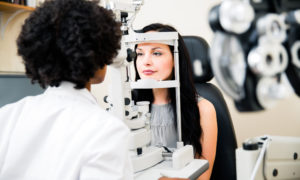June 5, 2019

A doctor at Wills Eye Hospital in Philadelphia has discovered in new research that patients with moderate glaucoma were much more likely than other older adults to be involved in accidents, according to reporting by Stacey Burling in the Philadelphia Inquirer.
Jonathan Myers, MD, chief of the Wills Eye Hospital glaucoma service, and his research team, conducted the study that led to these findings.
He told Burling that he is confident that the “vast majority” of patients in the study group met legal guidelines for driving, although data are still being analyzed. The study, he said, has implications for how eye doctors talk with patients — and lawmakers — about the risks associated with glaucoma.
Other Articles to Explore
The study, which has not been published, was presented at the recent meeting of the Association for Research in Vision and Ophthalmology. The driving analysis was part of a larger study of quality of life among glaucoma patients funded by Merck. The goal is to learn more about how the disease affects day-to-day functioning. Myers said the team included questions about accidents because previous research had shown increased risk among glaucoma patients.
The study followed 161 patients for four years. Their ages ranged from 29 to 83, with an average of 64, an age that Myers said was representative of most in the group. At the beginning, 137 were driving. That number had fallen to 101 at the end of the study.
Each year, they were asked whether they had been in an automobile accident. Six to 11 percent of them said they had. Fourteen people reported more than one accident. None was killed or seriously injured.
The overall accident rate for drivers aged 61 to 65 was 1.1 percent, according to 2017 Pennsylvania Crash Facts. That is a narrower age range than the glaucoma group, but Myers said he thought the trend was clear.
The risk for being in an accident correlated best with the quality of peripheral vision in the worst eye. That could have led to blind spots while driving, Myers said. “These patients in general aren’t patients where I would have brought up the issue of driving with them,” he said. “It sensitized me to the fact that I need to counsel my patients that there’s greater risk earlier in the disease.”



























